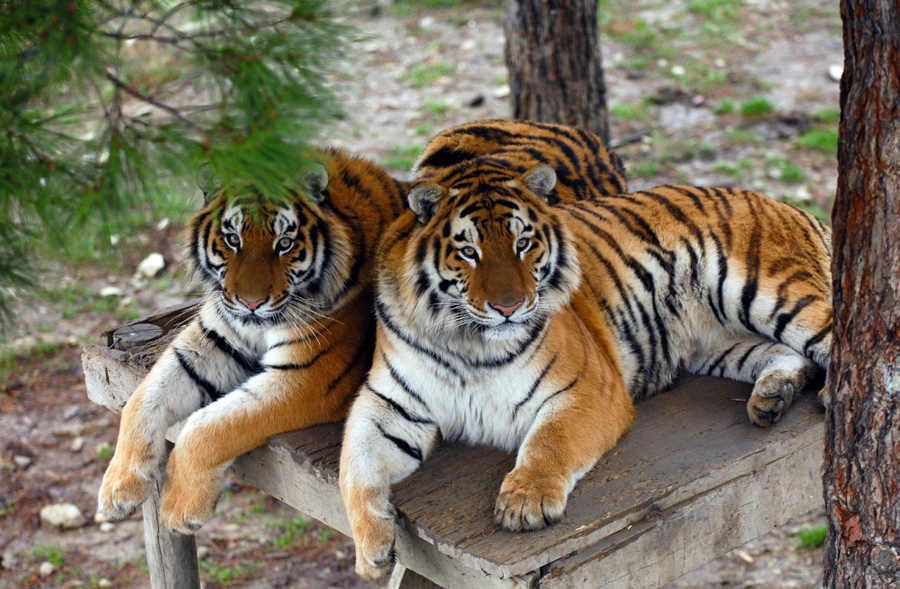Can you imagine a world without animals?! What about a world without rhinoceroses or tigers? Sadly enough, there has been a large decline in the abundance of these animals within the past few generations.

An image showing two South China Tigers sitting in an enclosed conservation area. Image Credit: Amur Tiger Programme, under Creative Commons License.
For example, the South China Tiger population, pictured above, is currently listed as critically endangered, since thousands of them have been killed from hunting practices. Another species in China that has a population directly threatened by hunters are the rhinos. Because poaching is persistent and there has been a gradual loss of habitat, there are very few rhinos that can survive outside of national parks.
The reason that animals, such as tigers and rhinos, are commonly sought after in China is because of their medicinal properties. The rhino horn is used to treat fevers, gout and even food poisoning! Tiger bones, on other hand, are used to boost health and oddly enough, they are believed to enhance male strength. Although there is a lack of evidence to support these “healing” powers, there is still a strong demand for rhino horns and tiger bones, which threatens these species’ chances of survival.

An image showing two rhinos after hunters have removed their horns, leaving them severely injured. Image Credit: Wikimedia Commons
As soon as Chinese government officials realized how urgent it was to protect these animals, they enforced a ban on the trade of rhino horns and tiger bones in 1993. This ban was a relatively effective measure aimed towards wildlife conservation. Although there was a subtle black market trade that persisted, it was definitely a step in the right direction towards saving these beautiful animals!
Despite China’s initial efforts to protect the endangered rhino and tiger species, they have recently decided to lift the ban on the trade of their body parts. This measure has spurred dissent amongst environmentalists and conservation groups, since poachers and hunters can now legally trade these items. Since rhino and tiger populations are already dwindling in numbers, the expansion of the wildlife trade market is a serious setback to prior conservation efforts. The urgency to continue to protect these endangered species is emphasized in the video below.

A video highlighting the criticism behind the removal of this ban.
Video Credit: Youtube, South China Morning Post, published under the Creative Commons License.
The removal of the wildlife trade ban will only encourage hunters/poachers to continue their practices… So therefore, it is crucial that we pursue any measure that might prevent these species from going extinct!
Lexynn Kwan

8 responses to “A Setback in Animal Conservation Efforts: Reversal of Rhino and Tiger Trade Ban in China”